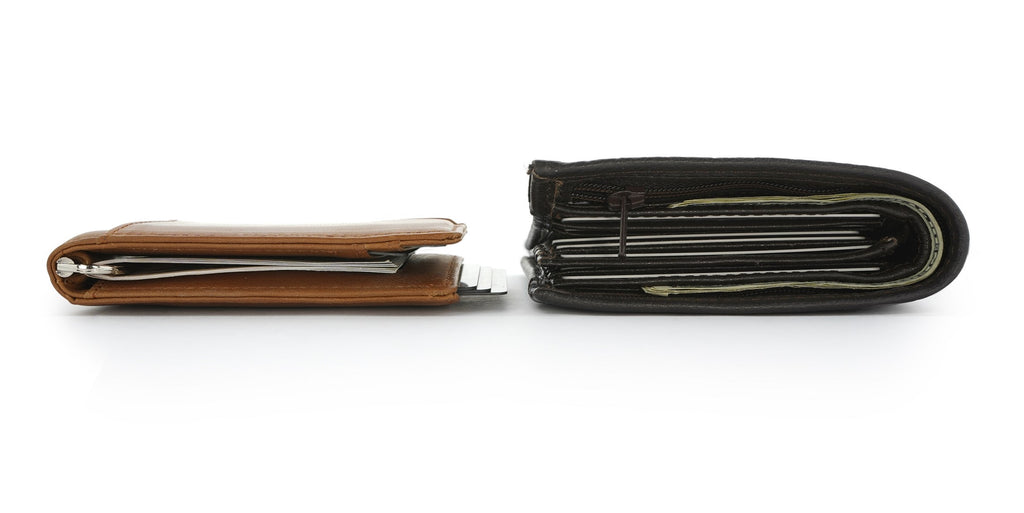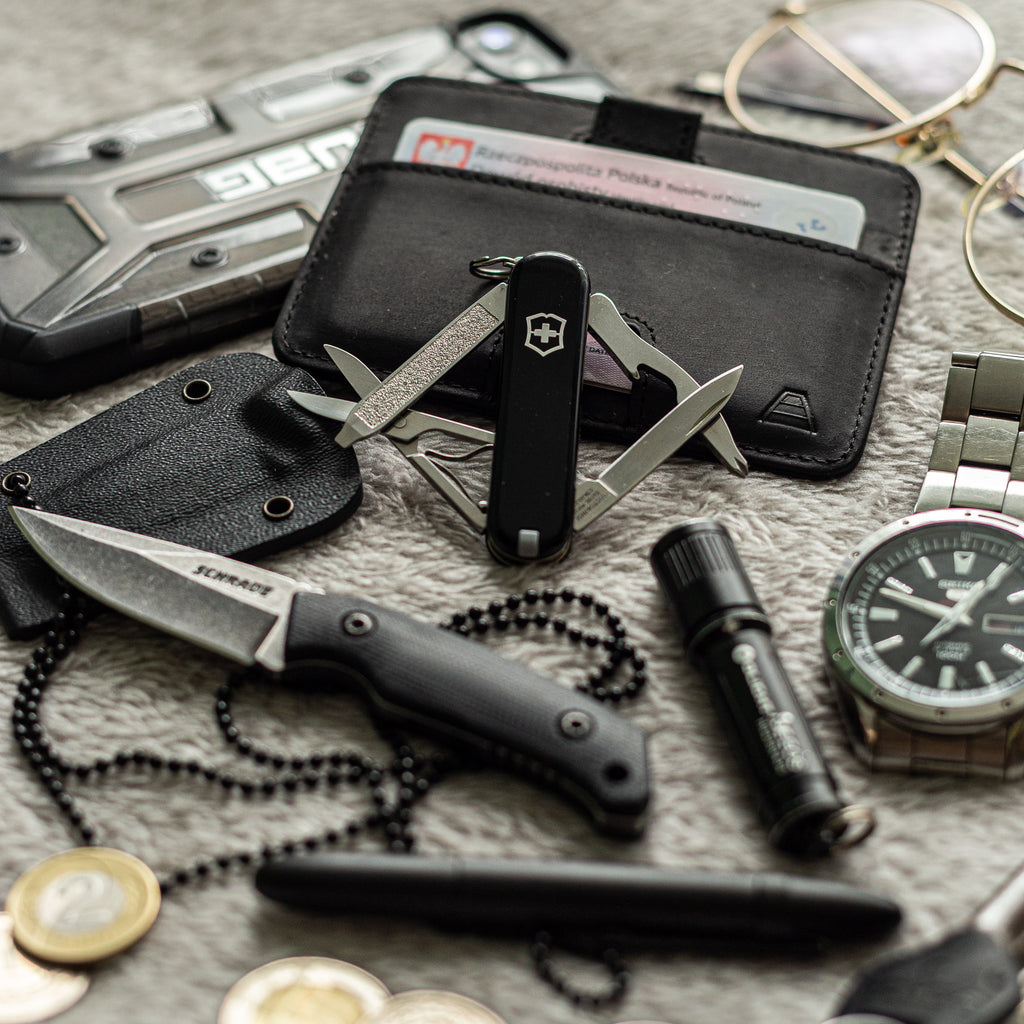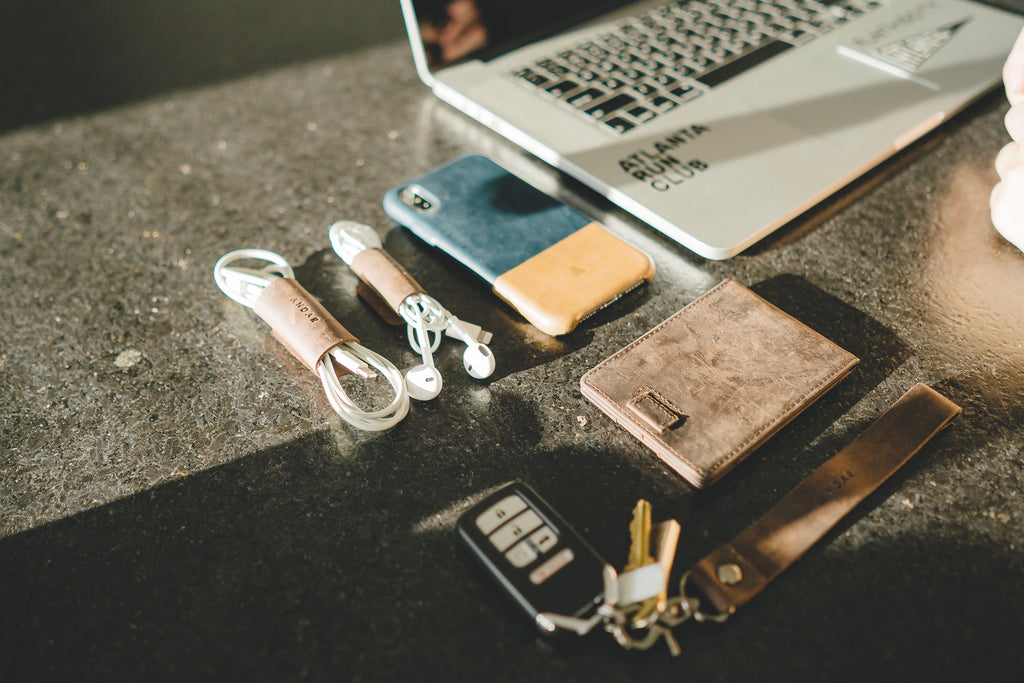Have you ever found yourself in a situation where you’ve been embarrassed about your disorganization? Maybe you were at the front of a really long line of impatient customers, but you accidentally spilled coins all over the counter or handed the cashier the wrong card. Maybe you offered to lend a friend some cash, but spent so long digging through your wallet for the right bill that your friend felt awkward and declined the offer. Maybe you needed to give your boss a certain business expense receipt, but then you fumbled through your huge pile of receipts and worried that he’ll wonder why he ever hired such a scatterbrained employee. Whether you’ve found yourself in one of these specific situations, or you’ve just been generally uncomfortable about your lack of organization, you’re not alone. Organizing what you carry with you every day is essential to maintaining a structured and efficient lifestyle. To help you, we’ve organized (get it?) this process into three easy steps—and everything revolves around identifying and working with your specific needs.
First: Minimizing
If you carry so much that organizing your bag or wallet seems like an overwhelming task, don’t worry—we’ve got you covered. First, you’ll want to go through everything you carry and eliminate clutter and infrequently used items. Take a look at our post on minimizing what you carry for an easy four-step process. Following this guide is the first move toward organizing your everyday carry, because you’ll need to get rid of anything you don’t need before you can organize what you do need.
When you go through this process of elimination, it’s important that you stick with your personal needs. What’s useless to one person might be essential to someone else, so go with your gut and keep what you strongly feel you’ll use and need on an everyday basis. At the same time, if you really want to organize what you carry, you’ll have to be selective with your items and make sure you’re open to change. Really think about what you can afford to go without, and be willing to try out different apps to digitize items that are unnecessary to carry in our day and age, like photos or receipts.

Next: Organizing
Once you’ve gotten rid of any junk, you’re ready to neatly organize what you have left. Start with the credit and debit cards that you’ve determined you’ll be using often. Decide how you want to organize them—whether that be by most frequently used to least frequently used, alphabetically, or by category (store credit cards, HSA and insurance cards, etc.), neatly arranging these cards is key. Do what works for you, but make sure your system is ordered enough that you’ll be able to access everything quickly and easily. You’ll want to do the same with your cash: try organizing your bills in numerical order so you know exactly what to reach for when you’re at the front of the line or handing your friend that small loan.
Once you’ve done that, move on to other items that can be grouped together. For one person, these items may mean chapstick and lotion; to another they might mean medication and first-aid items; for someone else, they may mean a notebook planner and pen. Regardless of your individual items, make sure you’re using small, travel-sized versions. When you’ve grouped your items, you may want to invest in some small bags, pockets, or organizers that will help you keep everything together and easily accessible. Remember with all these items, though, that you need to be selective about what you carry! Maybe you can leave some of these “essentials” in your car, workspace, or home, so that they’re there when you need them, but they’re not bulking up your wallet or bag.
Next, move on to things that can be digitized. We’ve made this even easier for you by providing a post on the best apps for storing photos and another post on the best apps for storing receipts, so your business expenses can be much better organized.
Last, you can further organize your items by investing in a few small products that will not only keep things together, but also make everything quieter and tidier. Like the other steps for organizing, these products will be different for everyone according to individual needs. You might need a phone case with a card slot for easy access to your most essential cards; maybe you need a small lanyard for your keys when your hands are full; or possibly what’s most important to you is something to keep your charger and earbud cords from getting tangled in your pocket or bag. Whatever you need, don’t go overboard—you want to organize what you carry, not add to the load. Do what works for you and keep it minimal.

Last: Committing
When you’ve finished organizing your everyday carry and tailoring everything to your own needs, you’ll need to follow through on the last step. Commitment to keeping your wallet, bag, or pockets neatly arranged is crucial to maintaining an organized lifestyle. Make a point to toss out any receipts or wrappers as soon as you get them (or as soon as you’ve digitized them if that’s something you need to do). Clean out your method of carry at least once a week to ensure you’re not adding any clutter. Developing these habits will ensure that you’ll never again be that person who holds up the line with your spilled coins, pile of cash, or clump of receipts. Just make sure that you organize things your way and carry what really matters to you.

Junyuan Bags | Professional Bag Manufacturer
Ten articles before and after
How to Build Your Everyday Carry – Junyuan Bags
A History of Wallets – Junyuan Bags
How to Create a Goal-Driven Workspace – Junyuan Bags
Did You Know? 5 Reasons to Slim Your Wallet – Junyuan Bags
RFID: What is it and why is it important? – Junyuan Bags
How to Care for Full Grain Leather – Junyuan Bags
Travel: Packing the Essentials, Ditching the Excess – Junyuan Bags
Full Grain Leather vs. Genuine Leather: What's Better? – Junyuan Bags
Why Cork Wallets? – Junyuan Bags
The Prereq to Minimalism: Reducing Your Everyday Carry – Junyuan Bags




 Mobile/What's App/Wechat
Mobile/What's App/Wechat E-Mail
E-Mail ADD
ADD




